If you are looking wholesale lighting solutions, click here.
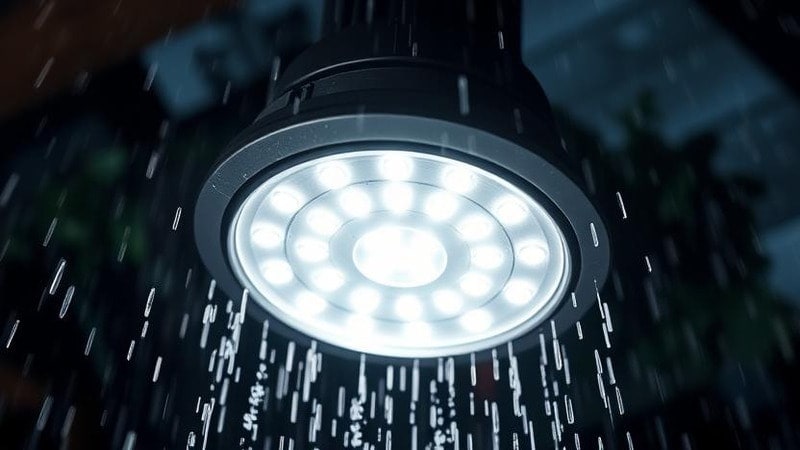
Are you confused about the various types of lighting distribution? Understanding how different types of light distribution work can help in selecting the most effective lighting solution. We have created this effective guide to help you understand and select LED light beams.
Let’s explore the types, applications, and working so you can choose the best lighting fixtures for your needs.
Light distribution refers to how light flows from a fixture and directly impacts visibility, ambiance, and safety in a space. There are different patterns of light distribution depending on whether it projects outward in specified directions, generates a symmetrical pattern, or focuses on a preferred side.
LED area lights, for example, are designed to provide even light distribution for consistent brightness. The Illuminating Engineering Society (IES) offers guidelines to help select the right fixture for each application.
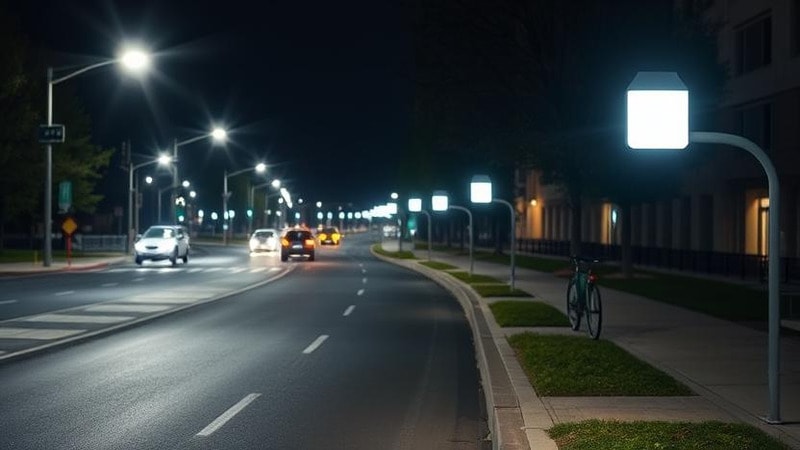
Type II is a great choice for side-of-road lighting as it efficiently covers both directions. Choosing the right light distribution can improve safety, aesthetics, and energy efficiency in both residential and commercial spaces.
Whether you’re lighting jogging paths, wide walkways, or central islands, recognizing these patterns is the first step toward creating a well-lit environment.
The Illuminating Engineering Society of North America (IESNA) has divided the distribution of light into five categories. Each type is tailored for a distinct use and environment.
These classifications can help you select appropriate fixtures to provide optimal lighting effects, whether you are choosing for narrow streets, wide pathways, or larger regions.
We’ve broken down each category to help you understand its unique properties and best uses.
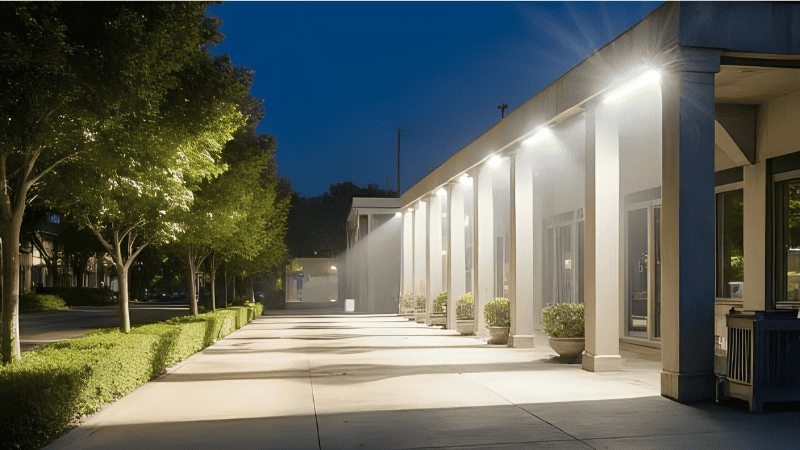
Type I lighting distribution is designed for pathways, smaller side streets, and narrow highways. It has a long and narrow light pattern.
This makes it perfect for pathways, pedestrian walkways, and narrow roadways that require focused illumination. The light is often directed in a two-way lateral distribution, ensuring uniform coverage along the entire path.
Type II lighting distribution is slightly wider than Type I, making it ideal for larger streets and walks. Its light pattern is intended to cover a larger area, making it ideal for streets, alleys, and tiny parking lots.
The lateral width of Type II guarantees that light is evenly dispersed across the surface, resulting in consistent visibility.
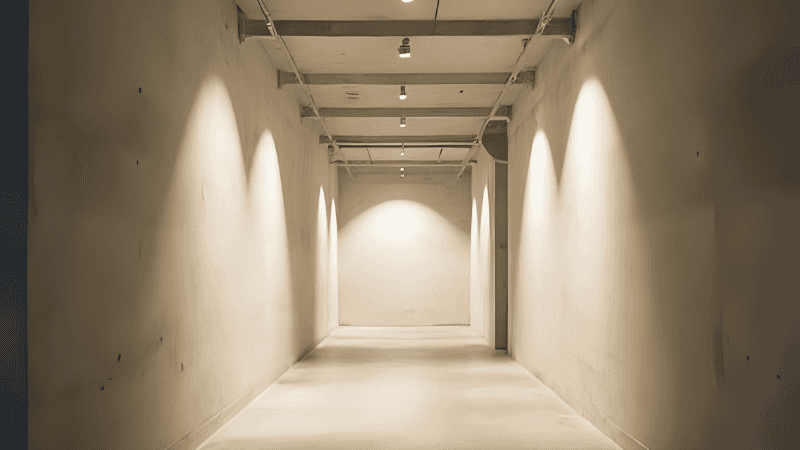
Type III is ideal for broad areas that require perimeter lighting, with an uneven distribution that provides superior coverage.
This type is frequently used in parking lots, industrial locations, and large streets where broad, even illumination is required. The light radiates outward in a broad pattern, illuminating even the borders.
Type IV distribution is intended for wall-mounted or perimeter lighting. It casts light outwards in the same manner as floodlights. This makes it ideal for use in building exteriors, perimeter security, and sports facilities.
The light is directed in a forward throw pattern to provide maximum coverage in the desired direction while minimizing spillage.
Type V lighting distribution produces an equal, circular light distribution with uniform 360° coverage. This makes it excellent for open areas, parking lots, sports fields, and plazas where light must be evenly distributed in all directions.
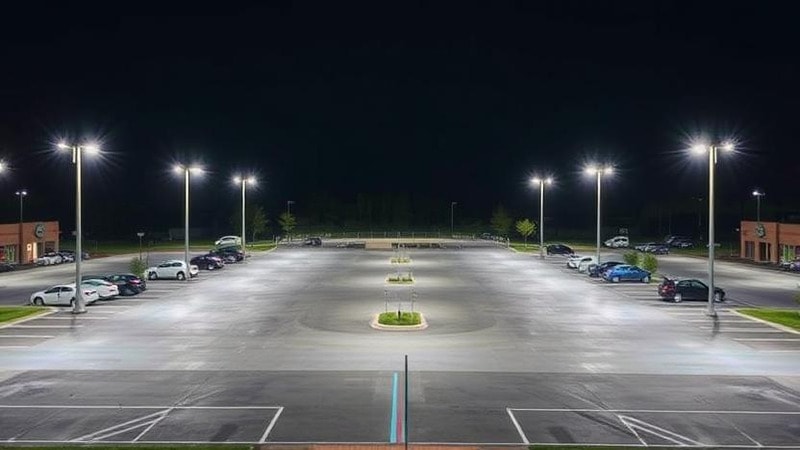
Type V’s circular symmetry ensures that each corner of the area receives the same amount of light, resulting in a balanced and well-lit environment.
Choosing the appropriate lighting distribution system is crucial for attaining optimal illumination. We’ve included a decision-making framework below to help you choose the best lighting distribution type for your project.
For illuminating vast areas such as parking lots, Type III and Type V distributions are preferred. They provide wide, equal light distribution, making sure every nook is well-lit.
Type V distribution, with its circular symmetry and 360° coverage, is ideal for open areas such as sports fields and plazas.
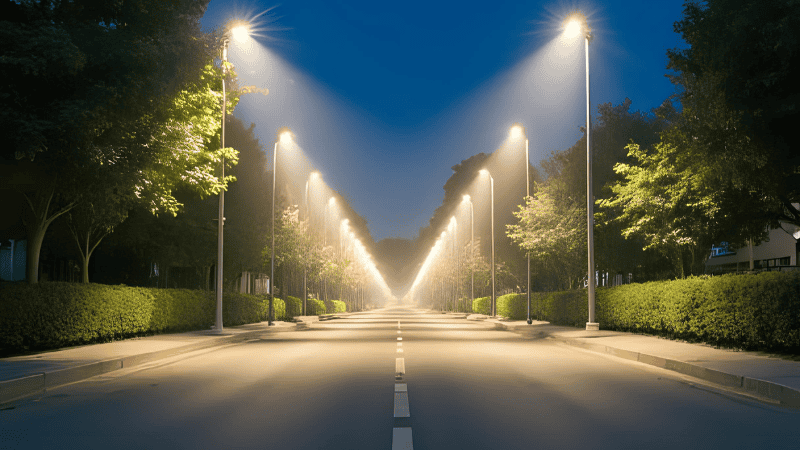
Type I and Type II distributions are best suited for relatively narrow roadways and pedestrian walkways. They produce focused, linear illumination to improve visibility and safety.
The first step in choosing the right lighting distribution type is to assess the application area. Different environments require different lighting patterns to ensure functionality and aesthetics.
Type IV distribution is suitable for wall-mounted or perimeter lighting since it projects light outward like a floodlight, which is ideal for security.
The designed mounting height of your fixtures is an important factor in determining the proper light distribution type.
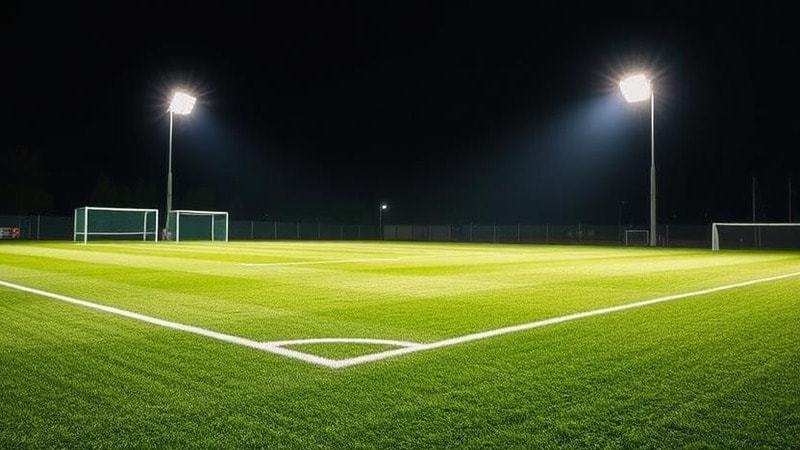
Fixtures positioned at higher elevations necessitate a wider distribution (e.g., Type III or Type V) in order to cover a bigger area effectively.
For fixtures closer to the ground, narrow beams (e.g., Type I or Type II) are better suited to reduce light spillage and glare, ensuring that the light is directed where it is required.
When deciding on lighting distribution types, energy efficiency and regulatory compliance are critical factors to consider.
Proper lighting distribution eliminates wasted light and glare, which can be inefficient and disruptive. For example, Type IV distribution is good at focusing light precisely where it is required, hence reducing spillover.
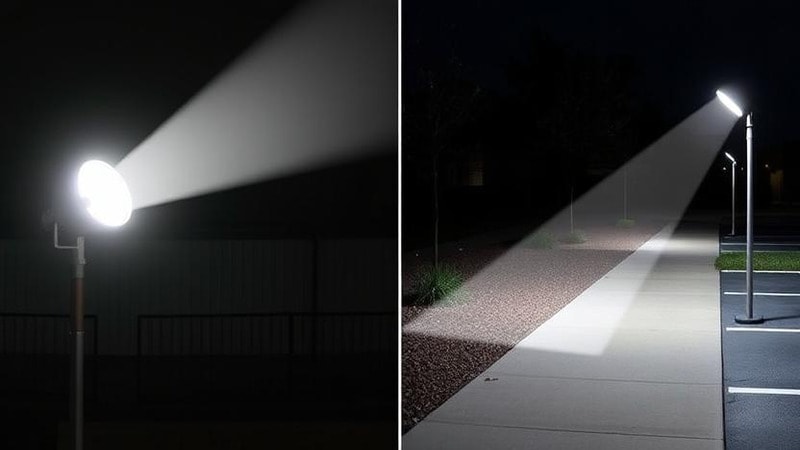
Ensure that your lighting design meets municipal and safety standards, such as those established by the Illuminating Engineering Society (IES), DesignLights Consortium (DLC), and Dark Sky Compliance. These standards specify the sort of distribution and luminaire mounting needed for certain applications.
Apart from light direction, there are several factors that you need to consider while selecting light fixtures for your project.
Illuminance is the amount of light that reaches a surface and has a direct impact on visibility in a variety of conditions. It is measured in ‘lux’.
Luminous flux, measured in lumens, represents a fixture’s entire light output and is therefore a more accurate measure of brightness than wattage.
Modern lighting systems favor lumens over wattage, as light fixtures are now engineered to improve efficiency while using less power.

The suggested illuminance levels of general storage warehouses are 100-300 lux; streets and roadways require 10-30 lux, depending on traffic flow. While suggested illuminance levels for parking lots are 30-50 Lux to improve visibility and security.
While both lighting distribution and beam angle influence how light is distributed, they serve distinct functions: Lighting distribution refers to light dispersion.
The beam angle is the width of the light spread from a fixture, which affects the focus and coverage of the light beam.
One significant difference is that lighting distribution influences large-scale illumination, such as lighting highways or sports fields, whereas beam angle is critical for more focused lighting, such as accent lighting in architectural settings.
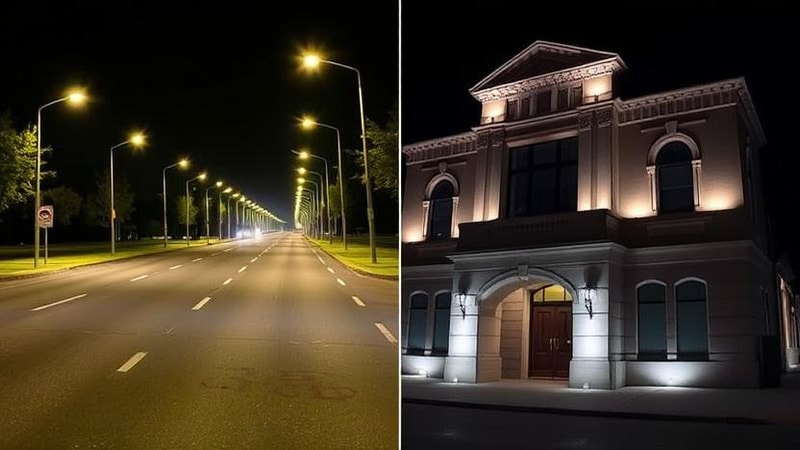
Ingress Protection (IP) ratings categorize lighting fixtures’ resistance to dust and water exposure, making them crucial for industrial and outdoor lighting.
Choosing the correct IP rating ensures that your lighting solution will last and function properly in the face of external factors such as humidity, dust, and water exposure.
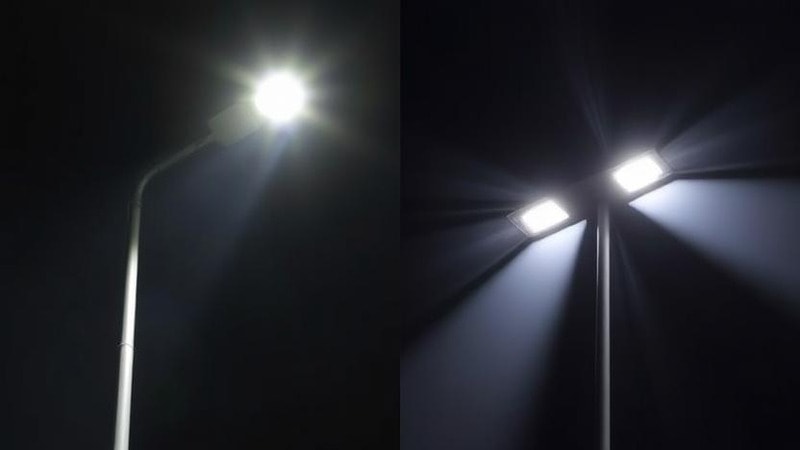
Traditional lighting sources, such as HID, Metal Halide, and HPS, produce omnidirectional light that must be directed and controlled by reflectors. This frequently results in light spills and energy wastage.
In contrast, LED technology provides perfect two-way lateral distribution, which means the light is concentrated exactly where it is needed, reducing energy loss. This results in improved uniformity with fewer dark areas.
The LEDs offer increased energy efficiency by directing the maximum candlepower to the desired region. Moreover, LED shop lights have a longer lifespan, which means lower maintenance costs.
When analyzing photometric data, it is obvious that LEDs beat traditional lighting in terms of planned mounting height flexibility and efficiency, making them the preferred choice for current lighting applications.
Now that you know the difference in light dispersion between LED and traditional light sources, it’s time for you to learn about other differences as well.
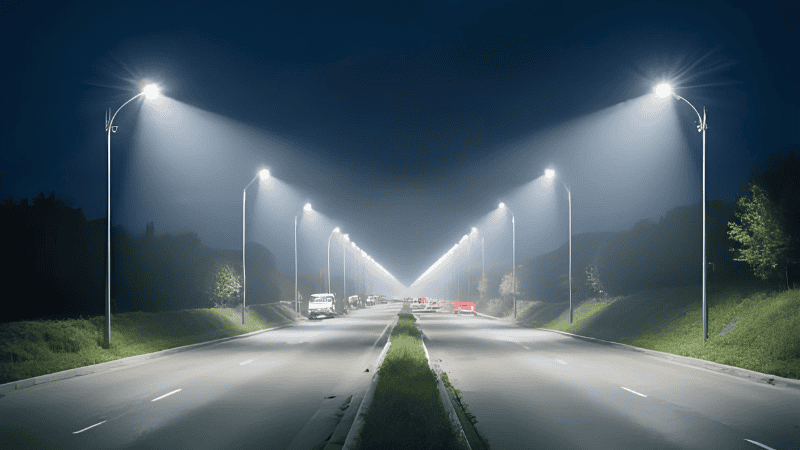
Selecting the appropriate lighting technology is critical for efficiency, durability, and cost savings. Here’s how LEDs compare against HID, Metal Halide, and HPS lighting in terms of performance and application.
HID and metal halide lamps provide a high light output, making them ideal for lighting vast areas like stadiums and parking lots. However, they use more energy and require extra reflectors to direct light, resulting in uneven illumination.
Furthermore, their long warm-up durations impair operational efficiency, making them less suitable for applications that require quick lighting.
HPS lighting is prized for its high efficiency, although it has poor color rendering and little control over lateral light distribution.
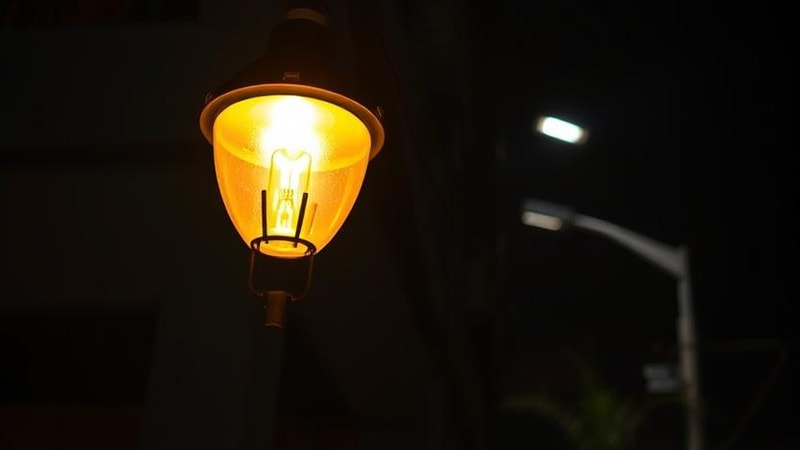
While extensively employed in streetlights, its inability to give the same intensity of light in diverse directions renders it ineffective for task lighting or applications that require uniform visibility.
LED lighting provides directional illumination, eliminating wasted light and improving overall lighting. It eliminates warm-up delays and improves operational convenience by allowing for quick on/off.
Furthermore, it has higher color rendering (CRI) for improved safety and visibility, particularly in areas where correct illumination is often required.
These lights offer a longer lifespan and cheaper maintenance costs, making them a better choice than HID, metal halide, and HPS lighting options.
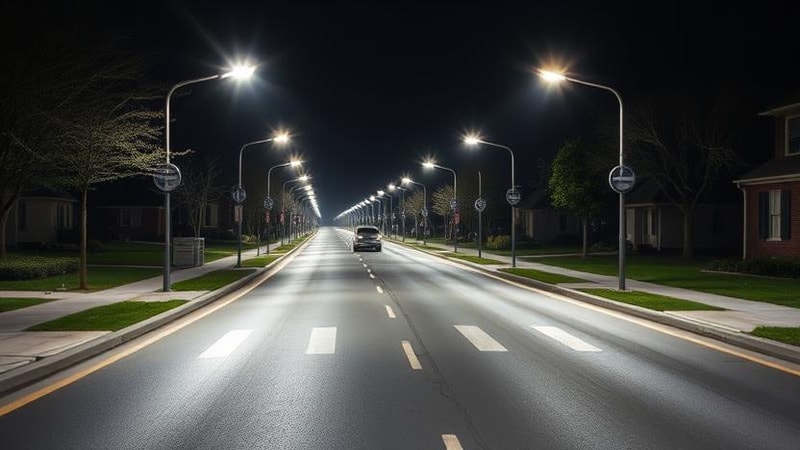
In this current day and age, taking on any project requires lighting knowledge. Whether you are in the construction stage or the finalization stage, lighting is always required.
Understanding the technicalities of lighting, such as lateral angles, will definitely help you in choosing the very best for your project.
While LED lights are superior in functionality, you need to select the appropriate beam angle and light distribution for your specific application needs.
Our experts at Risun Corp can help you find the perfect light fixtures tailored to your project’s needs.
Contact us today to explore our range of advanced LED lighting options and achieve the best light distribution in lighting design! Give us a chance, and we will try our best to meet your needs based on our experience.
A. Beam angle controls the dispersion of light from a luminaire, which influences focus and coverage. Lighting distribution describes how light travels across a surface, determining illumination patterns for various uses.
A. Yes, LED floodlights come in a variety of distribution patterns, ranging from wide-area coverage for lighting larger areas to targeted beams for ambient lighting. Manufacturers employ various optics and lenses to create lighting for certain applications.
A. Efficient light distribution eliminates wasted light by directing it precisely where it is needed. Poor distribution increases energy consumption by necessitating more lights to compensate for dark areas or glare.
A. For security lighting, Type III or Type IV distributions provide the best coverage and uniformity of illumination. These patterns reduce shadows while increasing visibility around buildings, parking lots, and access points.
Comprehensive Lighting Solutions for MRO Wholesalers and Professionals
send your inquiry
Hi, I'm the author of this post, and I have been in this field for more than 15 years. If you want to wholesale lighting fixtures or lighting related product, feel free to ask me any questions.
Learn More >>Download our catalog to view all of our lighting products.
Ready to get started ?
Send Your InquiryOur team will get back to you promptly

please
download
Get notified about new products
Our team will get back to you promptly!
Add your first comment to this post